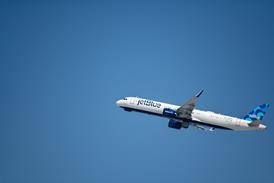Pilots and engineers at NASA's Glenn Research Centre (GRC) in Cleveland, Ohio will begin probing the skies above Puerto Rico in a refurbished US Navy S-3B this autumn for conditions conducive to high-altitude turbofan engine icing - a tropical environment the agency says may be linked to engine power problems in almost 100 documented cases since 1989.
The multi-year test programme is being operated in conjunction with the international Engine Harmonization Working Group, part of a US Federal Aviation Administration rulemaking advisory committee tasked with crafting new icing certification rules.
NASA will use the S-3B loaded with more than 12 sensors mounted on the aircraft's drop-tank pylons to determine, among other details, the distribution of liquid water and ice crystals in high-altitude clouds, ingredients thought to be key elements in the anomalies.
NASA formally rolled out the aircraft in a special ceremony at GRC on 23 January. Along with a new paint scheme, the S-3B's engines have been upgraded by the navy to include pressure transducers and vibration sensors to monitor engine health during the encounters. Avionics upgrades, performed by Boeing, include Garmin GPS units for the cockpit.
The S-3B, one of two transferred to NASA from the navy, replaces GRC's Twin Otter icing research platform, which since 2004 has been supporting Department of Defense and other projects.
NASA says the enhanced capabilities of the S-3B, including transcontinental range, 9h loiter time and abundant power, make it much more suitable for the pursuit of applicable weather conditions for the icing studies.
Source: FlightGlobal.com




















